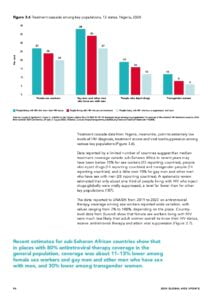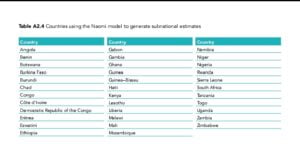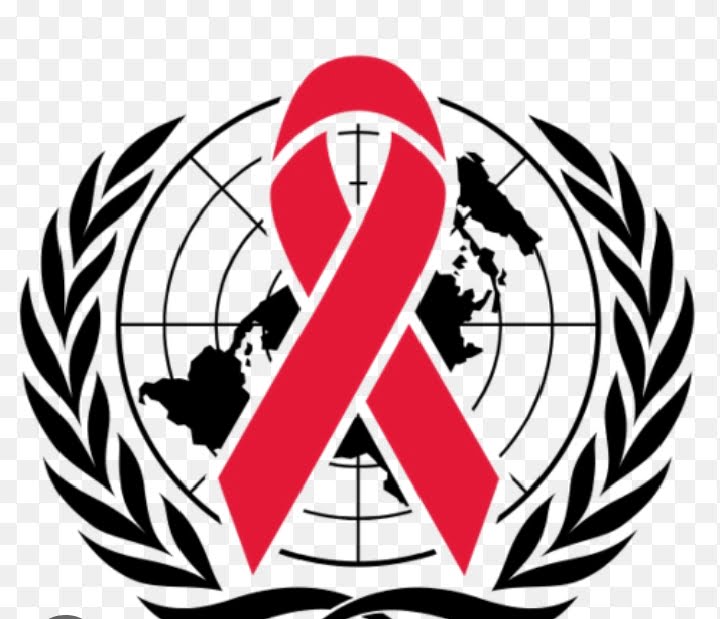Khadijah Aliyu
UNAIDS says in 2023, adolescent girls and young women accounted for 19% of all new HIV infections in west and central Africa (WCA).
The regional director Berthilde Gahongayire highlighted that, the region has recorded huge progress in access to treatment.
“Today, 81% of people living with HIV know their status, 76% of those receiving antiretroviral treatment and 70% have a suppressed viral load”

She however stressed that, countries such as Burundi and the DRC are on the verge of achieving the 95-95-95 targets for HIV testing and treatment .
“Paediatric HIV is an absolute priority in the region, with only 35% of children living with HIV receiving treatment in 2023”
“Additionally, the region is home to 20% of the world’s pregnant women living with HIV, but more than half of them are not receiving antiretroviral treatment”
“UNAIDS has proposed a new approach to ensure the sustainability of the HIV response through a report titled The Urgency of the Moment AIDS at the Crossroads. This report emphasizes the need for strong political commitment, technical expertise, and community mobilization to continue progress towards preventing the vertical transmission of HIV”
AIDS AT THE CROSS ROADS
2024 AIDS GLOBAL UPDATE
According to UNAIDS, in June 2021, the global HIV response has moved closer to the goal of Ending AIDS as a public health threat by 2030, as enshrined in the Sustainable Development Goals.
Fewer people acquired HIV in 2023 than at any point since the late 1980s. Almost 31 million people were receiving lifesaving antiretroviral therapy in 2023, a public health success.
The global HIV response is progressing at two different speeds. There have been significant successes in reducing the number of AIDS-related deaths in sub-Saharan Africa, resulting in an increase in average life expectancy in the region. However, in other parts of the world, especially in 28 countries, there has been a rise in new HIV infections.

In 2023, it is estimated that 1.3 million people acquired HIV, which is over three times the target of 370,000 new infections for 2025. Notably, the rise in new HIV infections is being experienced in three regions: eastern Europe and central Asia, Latin America, and the Middle East and North Africa.
This marks the first time in the history of the HIV pandemic that more new infections are occurring outside sub-Saharan Africa than within it. This change reflects the successful prevention efforts in sub-Saharan Africa and the ongoing challenges faced in other regions.
The global HIV prevention response is proceeding at an encouraging pace in Sub-Saharan Africa, but it has stalled in other regions. Persistent and, in some Countries, widening gaps in basic HIV prevention must be resolved urgently.
At least half of all people from key populations are not being reached With prevention services, according to data reported to UNAIDS.
In addition, more Than half of the areas with high or moderately high HIV incidence in sub-Saharan Africa are not being served by prevention programs tailored for Adolescent girls and young women.
High HIV incidence denotes one or more new infections per 100 person-years. Moderately Condom use remains the most effective low-cost HIV prevention method.
Condom use has declined in recent years, including among young people Aged 15–24 years, and it is highly infrequent during sex with non-regular Partners.
The report says,95% of people living with HIV know their HIV status; 95% of people who know they are living with HIV receive Antiretroviral therapy; and 95% of people receiving antiretroviral therapy have suppressed viral loads.
The success of HIV treatment has led to a rise in the average age of People living with HIV. As people living with HIV grow older, they Are likely to encounter a growing range of comorbidities, including Non communicable diseases such as hypertension and diabetes, that Require care.
However, Closer integration of HIV and other health services, Equipment and supply chains, and upgraded training for health workers Will be needed to deal with these changes.
The 10–10–10 and the 30–80–60 targets set for 2025 are not within reach. Stigma, discrimination, social inequalities and gender-based violence make It hard for people to stay free of HIV and protect their health (18). People From key populations are especially vulnerable .
Recognition of these Hindrances has increased, but it is not yet sufficiently reflected in laws, Policies and practices. Rising authoritarianism and attacks on human and Civil rights are making it even more difficult to remove these barriers.
HIV-related stigma and discrimination have declined in some countries but Remain unnervingly common in many others. Gender-based inequalities Continue to be pervasive, to varying degrees depending on the country.
Punitive laws targeting people living with HIV and people from key Populations are still on the statute books in almost all countries. Gender based violence, including against women and girls, remains a menace
Everywhere Across 42 countries with recent survey data, in median almost half (47%) When integrated, HIV and other health services can improve health Outcomes, strengthen health systems, and support progress towards Universal health coverage .
There has been a marked shift towards the integration of HIV and other Health-care services in recent years. Although still in a minority, an increasing Most funding for HIV comes from domestic resources but Both international and domestic HIV funding are under stress.
The 2024 global AIDS update explained that, in Nigeria, the Framework for Dialogue addressed stigma and Discrimination against people living with HIV as a Major barrier to ending AIDS by 2030.
Nigerians are Split almost equally between Christianity and Islam. Understanding between the two faiths is essential for Social progress.

By the end of 2023, of the approximately two million People living with HIV in Nigeria, 59% were women Aged 15 years and over, 33% were men aged 15 years And over, and 9% were children aged 0–14 years,in 2023, the country achieved 85–>98–96 for the UNAIDS.
Nigeria is among the Countries that will potentially reach viral suppression targets by 2025 at 80% viral suppression among people living with HIV Burundi 81 000,Croatia 1800,Nigeria2.0 million, Slovenia 940,Thailand 580 000.
Recent estimates for sub-Saharan African countries show that in places with 80% antiretroviral therapy coverage in the General population, coverage was about 11–13% lower among Female sex workers and gay men and other men who have sex With men, and 30% lower among transgender women.
Treatment cascade data from Nigeria, meanwhile, point to extremely low Levels of HIV diagnosis, treatment access and viral load suppression among Various key populations.





